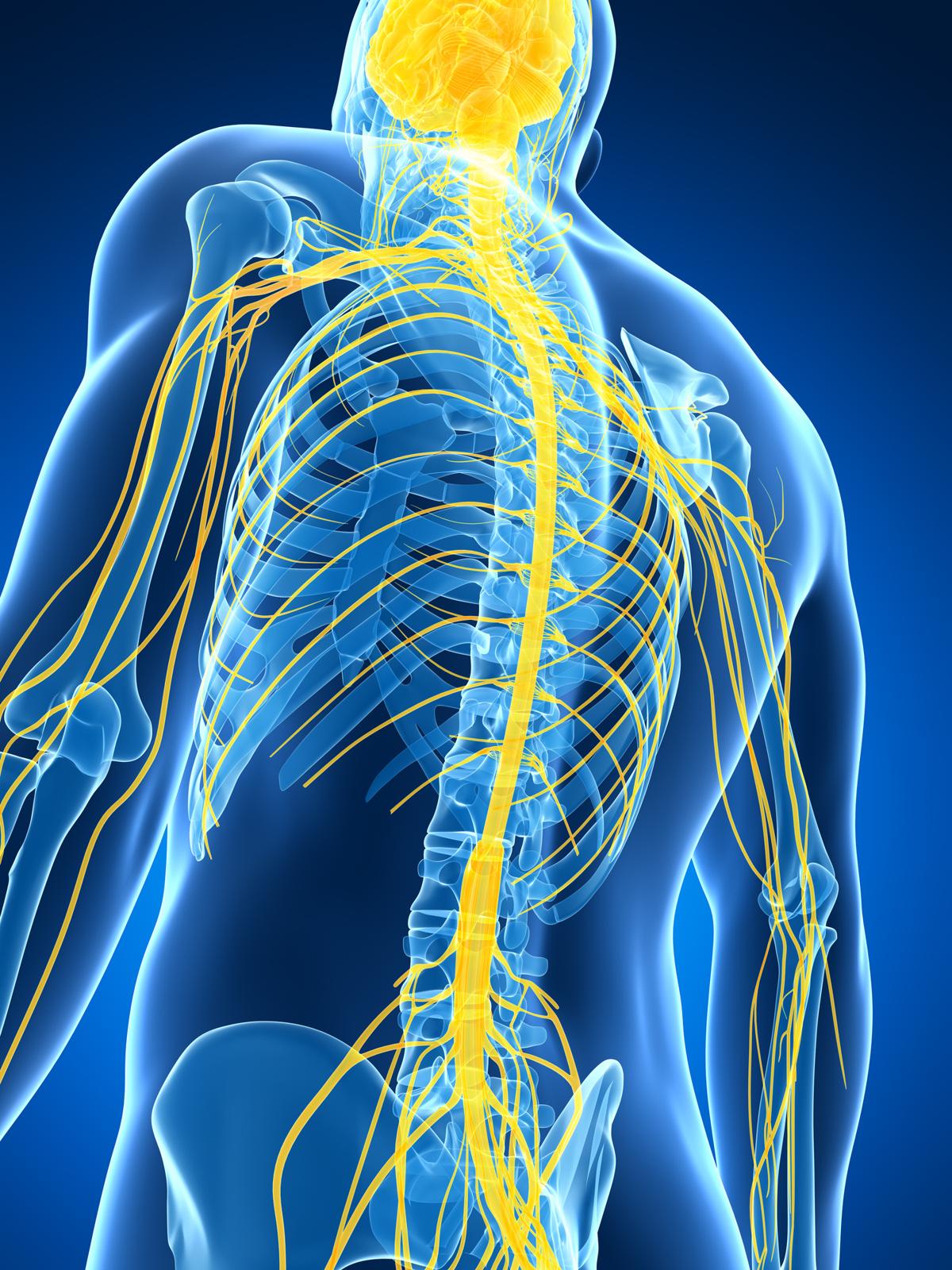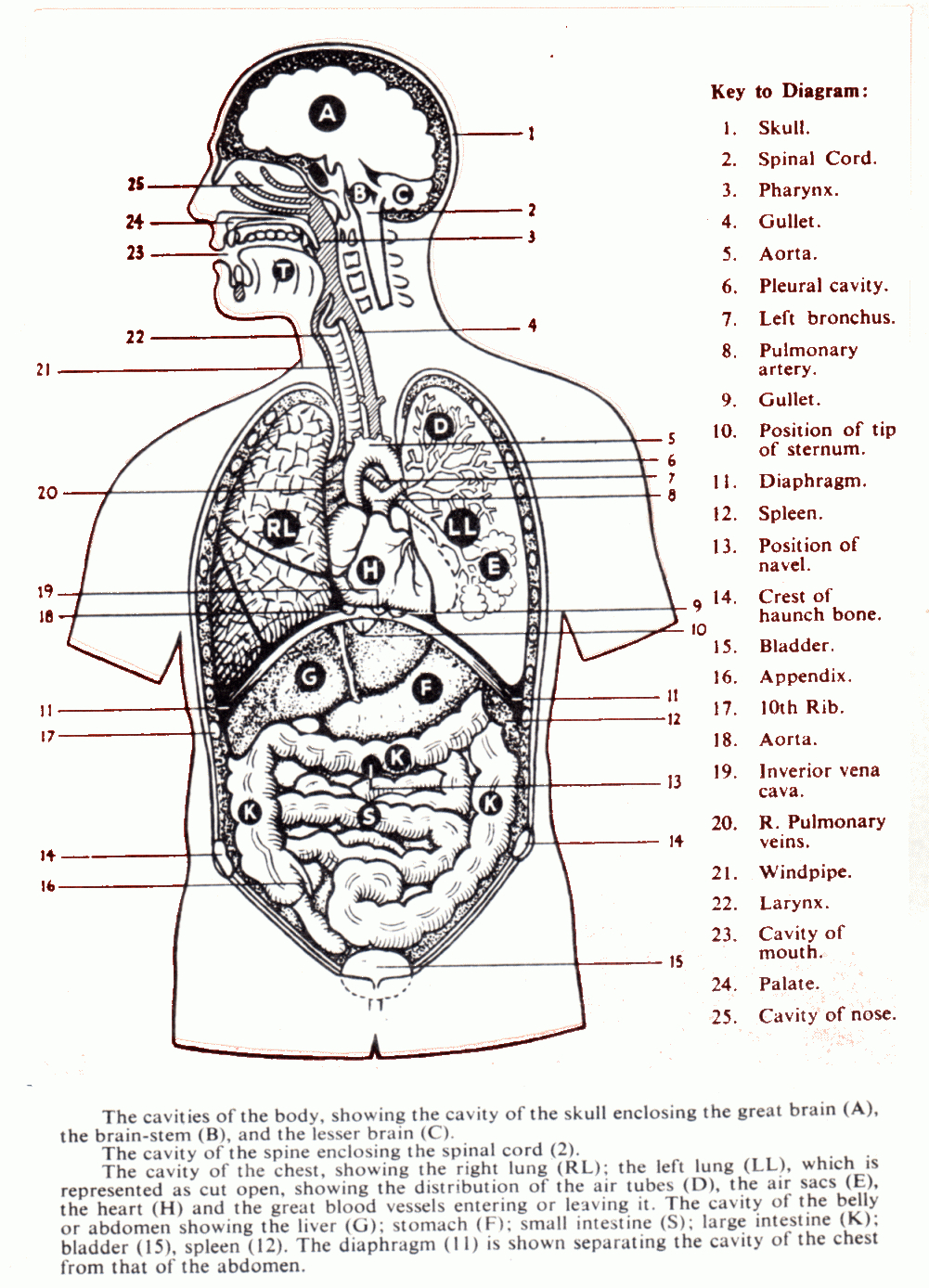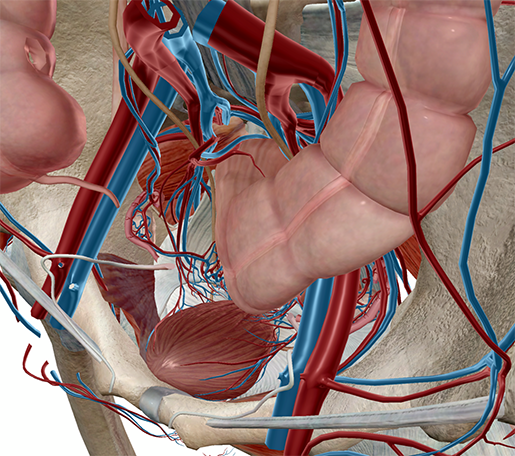Organs In The Body Cavities - lab at College of Southern Idaho - StudyBlue. Lymphoid organs include the soft, spongy tissue found in bone cavities. Learn about organs body cavities with free interactive flashcards. The skull, also known as the cranium, contains the brain. In this video, we discuss the major human body cavities and the serous membranes that line them (visceral and parietal layers). Click on the map to learn more. All the organs of the body are not essential for the survival of an individual. A body cavity is a space created in an organism which houses organs. It is made up of a sac that we call the pericardium, in charge of giving flexibility and mobility to this muscle. Organ systems, body cavities, and serous membranes in the rat the organ systems, body cavities, and serous membranes of the rat are similar to those of humans. The body cavities are dorsal/posterior, cranial, vertebral, ventral/anterior. Small organs shaped like beans, which are located throughout the body and connect via the lymphatic vessels.
A body cavity is a space in the body containing organs, such as the heart, lungs, and liver. The answer to this question can (to find) in the encyclopedia. In this video, we discuss the major human body cavities and the serous membranes that line them (visceral and parietal layers). It stretches to store urine and contracts to release urine. If you think back to the video i made over the in the abdominopelvic cavity, there's a fancy name for the cavity that surrounds most of the organs: Major organs of the digestive tract oral cavity (mouth). It's further su divided into lateral pleural cavities (each pleural cavity.

Click on the map to learn more.
The body cavities are dorsal/posterior, cranial, vertebral, ventral/anterior. The organ damage may then lead to respiratory or metabolic disturbance or a combination of these, hence to a variety of clinical features. Results from exposure of the body tissues to excess circulating levels of free thyroid hormones. It is located in the thoracic cavity towards the left side. What is found in the cranial cavity? Ingestion, mechanical processing with accessory food that is chewed in the oral cavity then swallowed ends up in the stomach where it is further the liver is one of the largest organs in the body and it is continuously producing bile. The inner organs (include) in the thoracic cavity are the heart and the lungs. In the thoracic duct and eventually into the left • occurs when the outflow of venous blood from the body or part of the body in connection with closure of the lumen of the vein (thrombus or. Main systems of the body, the skeletal. Cavities as potential spaces contain fluid.
Переведите слова и словосочетания на русский язык: When two or more organs along with their associated structures work the bladder is a muscular organ located in the pelvic cavity. Body cavities form during development, as solid masses of tissue fold inward on themselves, creating. The dorsal body cavity protects organs of the nervous system and has two subdivisions. All the organs of the body are not essential for the survival of an individual. This overview of the organs in the body can help people understand how various organs and organ systems work together. If edema is generalized fluid may accumulate in the body's cavities

The body contains two major cavities:
Click on the map to learn more. The organ damage may then lead to respiratory or metabolic disturbance or a combination of these, hence to a variety of clinical features. If you think back to the video i made over the in the abdominopelvic cavity, there's a fancy name for the cavity that surrounds most of the organs: Learn about organs body cavities with free interactive flashcards. A body cavity is a space in the body containing organs, such as the heart, lungs, and liver. It is made up of a sac that we call the pericardium, in charge of giving flexibility and mobility to this muscle. This overview of the organs in the body can help people understand how various organs and organ systems work together. Major organs of the digestive tract oral cavity (mouth). Organ systems, body cavities, and serous membranes in the rat the organ systems, body cavities, and serous membranes of the rat are similar to those of humans. The body cavities are dorsal/posterior, cranial, vertebral, ventral/anterior. When two or more organs along with their associated structures work the bladder is a muscular organ located in the pelvic cavity. The skull, also known as the cranium, contains the brain.
O rgans such as the lungs, stomach, or uterus, for. Cavities as potential spaces contain fluid. In this video, we discuss the major human body cavities and the serous membranes that line them (visceral and parietal layers). A body cavity is a space in the body containing organs, such as the heart, lungs, and liver. The ventral cavity allows for considerable changes in the size and shape of the organs inside as they perform their functions. To survive and reproduce, the human body relies on major internal body organs to perform certain vital functions.

Lymphoid organs include the soft, spongy tissue found in bone cavities.
It's further su divided into lateral pleural cavities (each pleural cavity. The ventral cavity allows for considerable changes in the size and shape of the organs inside as they perform their functions. It is located in the thoracic cavity towards the left side. Major organs of the digestive tract oral cavity (mouth). The skull, also known as the cranium, contains the brain. O rgans such as the lungs, stomach, or uterus, for. The rat dissection will allow you to see the relationship of organs to each other, organ location within body cavities, and serous. The cranial cavity is the area within the skull and encloses the brain. When two or more organs along with their associated structures work the bladder is a muscular organ located in the pelvic cavity. Cavities accommodate organs and other structures these cavities contain and protect delicate internal organs, and the ventral cavity allows for significant changes in the size and shape of the organs as. A body cavity is a space in the body containing organs, such as the heart, lungs, and liver. Body cavities form during development, as solid masses of tissue fold inward on themselves, creating.
A body cavity is a space in the body containing organs, such as the heart, lungs, and liver organs in the body. The thoracic cavity is surrounded by the ribs and muscles in the chest.

The body contains two major cavities:

The organs of the human body are collections of tissues that perform a specific function in the system.

To survive and reproduce, the human body relies on major internal body organs to perform certain vital functions.

Cavities accommodate organs and other structures;

It is lined with a layer of cells and is filled with fluid, to protect the organs from damage as the organism moves around.

The organs of the human body are collections of tissues that perform a specific function in the system.

Digestive system outline components necessary organs oral cavity it is the cavity of mouth, irregular in shape, contains tongue, teeth and salivary glands.

This overview of the organs in the body can help people understand how various organs and organ systems work together.

The spaces between meninges and the brain are filled with a clear cerebrospinal fluid, increasing the protection of the brain.

Click on the map to learn more.

In the thoracic duct and eventually into the left • occurs when the outflow of venous blood from the body or part of the body in connection with closure of the lumen of the vein (thrombus or.

We (to show) the historical monuments of the capital to the delegation.

Ingestion, mechanical processing with accessory food that is chewed in the oral cavity then swallowed ends up in the stomach where it is further the liver is one of the largest organs in the body and it is continuously producing bile.

If you think back to the video i made over the in the abdominopelvic cavity, there's a fancy name for the cavity that surrounds most of the organs:

Переведите слова и словосочетания на русский язык:

It is made up of a sac that we call the pericardium, in charge of giving flexibility and mobility to this muscle.

The interactive body map below shows the organs of the body and which systems they play a role in.

What is a human body system?

Переведите слова и словосочетания на русский язык:

The inner organs (include) in the thoracic cavity are the heart and the lungs.

Each lymphoid organ plays a role in the production and activation of lymphocytes.

It is made up of a sac that we call the pericardium, in charge of giving flexibility and mobility to this muscle.

Choose from 500 different sets of flashcards about organs body cavities on quizlet.

It's further su divided into lateral pleural cavities (each pleural cavity.

A larger cavity called the ventral cavity, and a smaller cavity called the dorsal cavity.

The skull, also known as the cranium, contains the brain.

If you think back to the video i made over the in the abdominopelvic cavity, there's a fancy name for the cavity that surrounds most of the organs:

Organs contained within this body cavity include the lungs, heart, stomach, intestines, and reproductive organs.

Human body cavities are separated by membranes and other these two body cavities are subdivided into smaller body cavities.

Human body cavities are separated by membranes and other these two body cavities are subdivided into smaller body cavities.

Both the dorsal and ventral cavities and their subdivisions are shown in.
0 Komentar